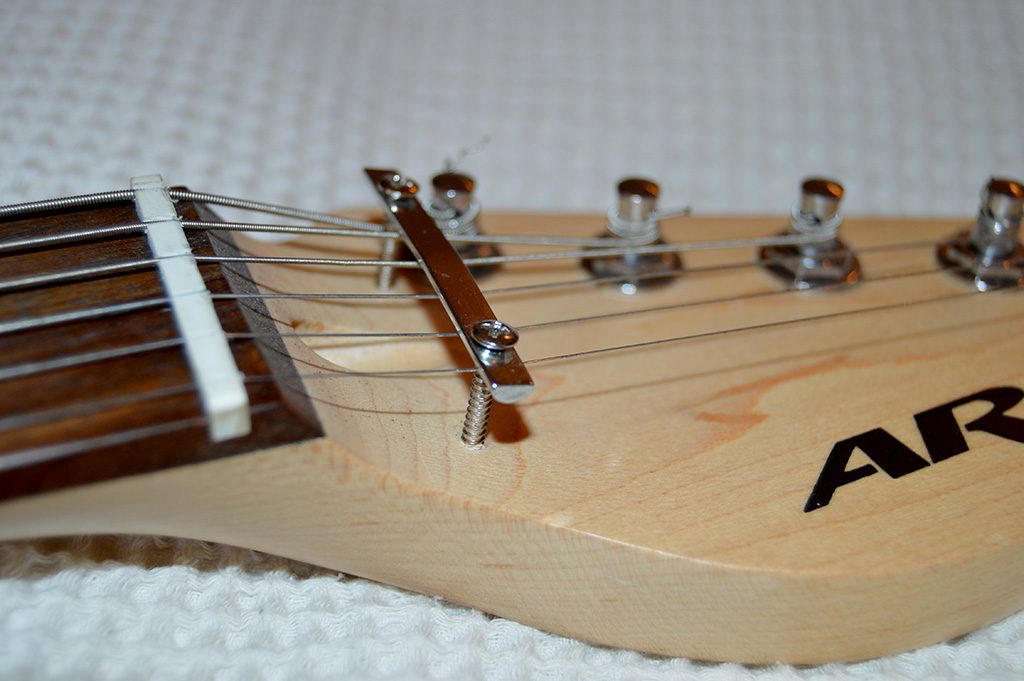In part 1 we started thinking about how to make my Aria AMG10 into the ultimate travel guitar.

If you’re not familiar with this guitar, here are some relevant facts:
- alder body
- maple neck
- 22 fret rosewood fretboard
- 24″ scale length
- Aria OS-1 single-coil sized humbucker
- built in 9v amplifier with 4″ speaker
- 1/4″ and headphone jack outputs
- volume and tone controls
- amp on/off switch
The first thing that needed to be done is to address the tuning instability. It wasn’t difficult to tune the guitar, but just a few minutes of playing left it horribly out of tune. I suspected that the extreme angles in the strings produced by a bar type string tree just behind the nut were to blame.

After loosening the retainer bar off a little the situation improved but it still wasn’t great, so I decided to remove it altogether.
Every time that a guitar string changes direction between the ball end and where it winds on to the tuner, there is the potential for the string to bind and cause the type of tuning instability we were seeing here. By removing the retaining bar the strings were no longer “sticking” at the bar and the guitar was staying in tune.
The string retainer bar was there for a reason though – without enough of a down angle on the strings as they cross the nut, sustain would be lost and there is the possibility of popping a string out of it’s slot. The picture below illustrates how each string forms it’s own break angle depending on the distance to the tuner.

Photographed from this angle it immediately becomes obvious that it is only the higher strings which are in danger of popping out of their slots as the lower strings have a sufficiently sharp break angle. In fact, it looks as though only the high E and B strings need some form of string tree. I don’t want to cause the tuning problems to come back, so I’m going to use a roller tree to minimise the chance of anything binding.
As luck would have it, I just happen to have a roller string tree lying around that I can use. I also have a spare set of Sperzel-type locking tuners that I will use to replace the stock tuners. I don’t think that there is anything fundamentally wrong with the tuners on the guitar but as I am planning on taking the neck off the guitar while in transit and I don’t yet know if it’s practical to leave the strings on while I do so, having a quick and easy method of re-stringing would be handy. If it is practical to keep the strings attached to both pieces, the locking tuners will ensure that the strings don’t come right off the tuners when they are loosened.
Looks like it’s time to head off to the workshop…
Part 3 coming soon.




